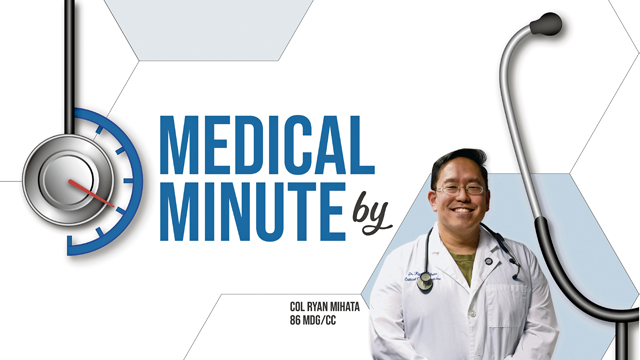 Greetings from the 86th Medical Group!
Greetings from the 86th Medical Group!
As many of you know, case counts of COVID-19 are climbing across Europe. We have been relatively stable in Germany until recently. At Ramstein, we experienced a spike in active cases in late August/early September, and we had another spike in cases starting in early October.
Similar spikes were seen in the local community and surrounding areas, most likely due to the relaxation of restrictions and “COVID fatigue.” The spikes highlight the importance of refocusing on and continuing the prevention measures that have kept us healthy thus far. Keep up the precautions; COVID is in our community.
Many have asked about the process of contact tracing. When an individual has a positive test, they undergo an interview process with public health. The look-back period is 48 hours from either the start of the patient’s symptoms or from the positive test, if the patient was asymptomatic. People around the patient will be considered “close contacts” if they were within six feet of the patient for longer than 15 minutes (regardless of whether or not they were wearing face coverings). This means 15 minutes at a time or a cumulative period of time. Common “close contacts” of positive individuals are family members, friends who socialized off-duty, and coworkers or teammates of the individual on duty.
Maintaining prevention measures at all times decreases the possibility of transmission of the virus. U.S. Public Health teams report positive cases and contact tracing to the appropriate German Gesundheitsamt (local public health department) on a regular basis (daily if necessary) once the contact tracing is complete.
We are also entering influenza season. The fact that it is very difficult to distinguish the symptoms of the seasonal flu from symptoms of COVID-19 make the importance of getting a flu vaccine paramount this year.
Preventing flu is part of our COVID-19 response. We have received some shipments of the influenza vaccine and plan to run a Point of Distribution scheduled by unit on Oct. 27 and 28. Prioritization (as in all years) starts with first responders and those medically at risk, followed by active duty. We will administer our current supply of vaccines until it is exhausted, and we will publicize when we have more vaccines available for the rest of the active duty force and other beneficiaries.
Stay safe and healthy!


